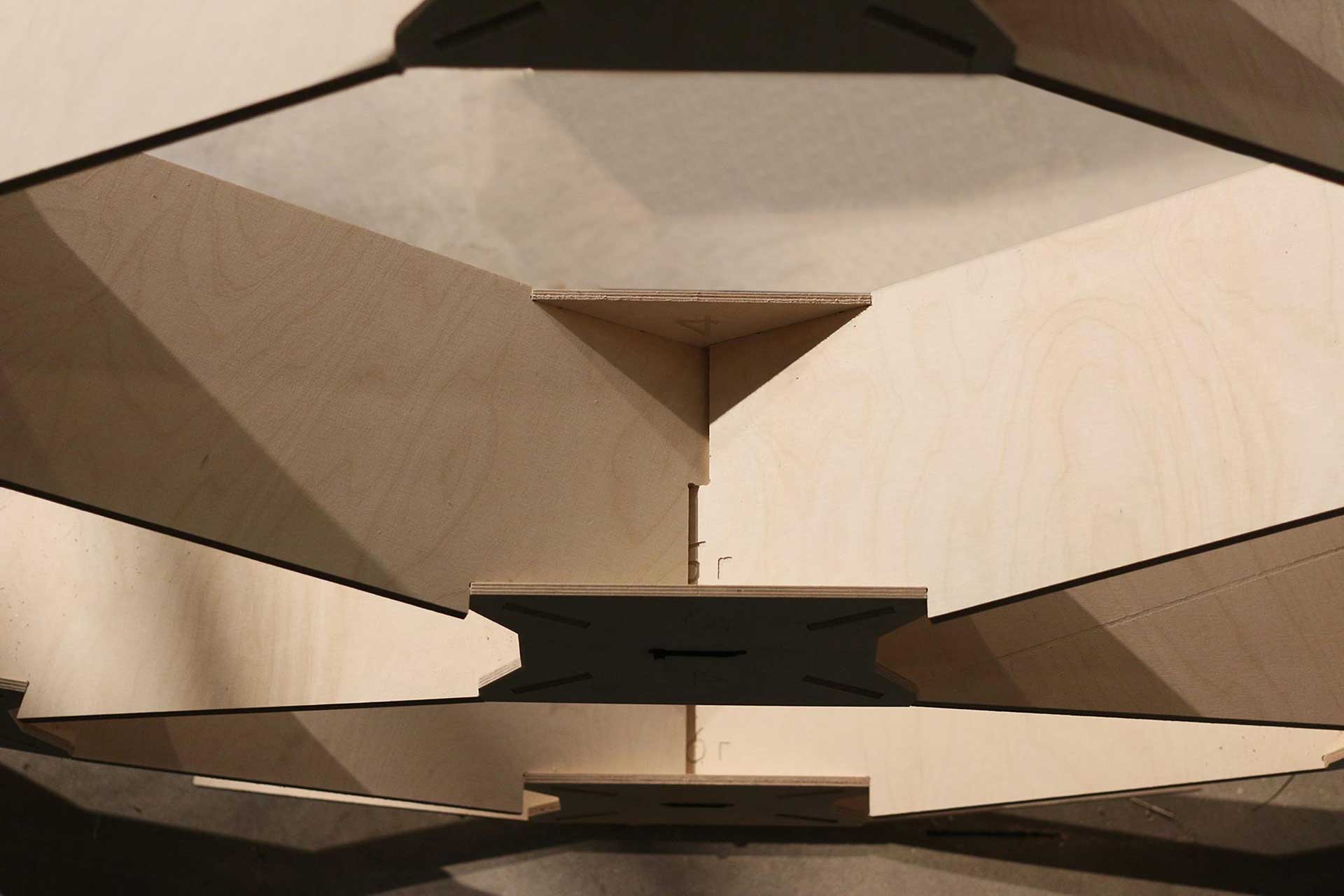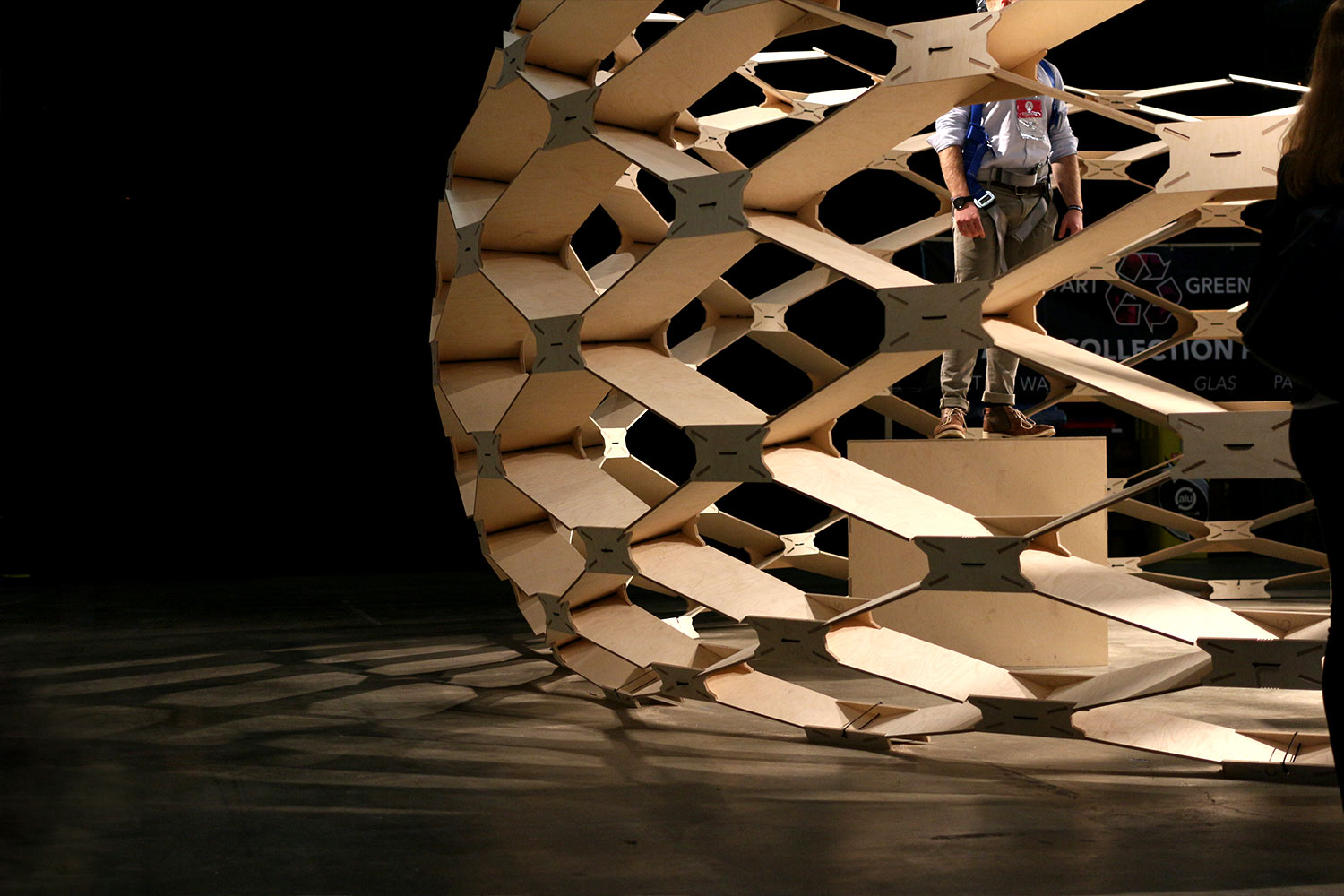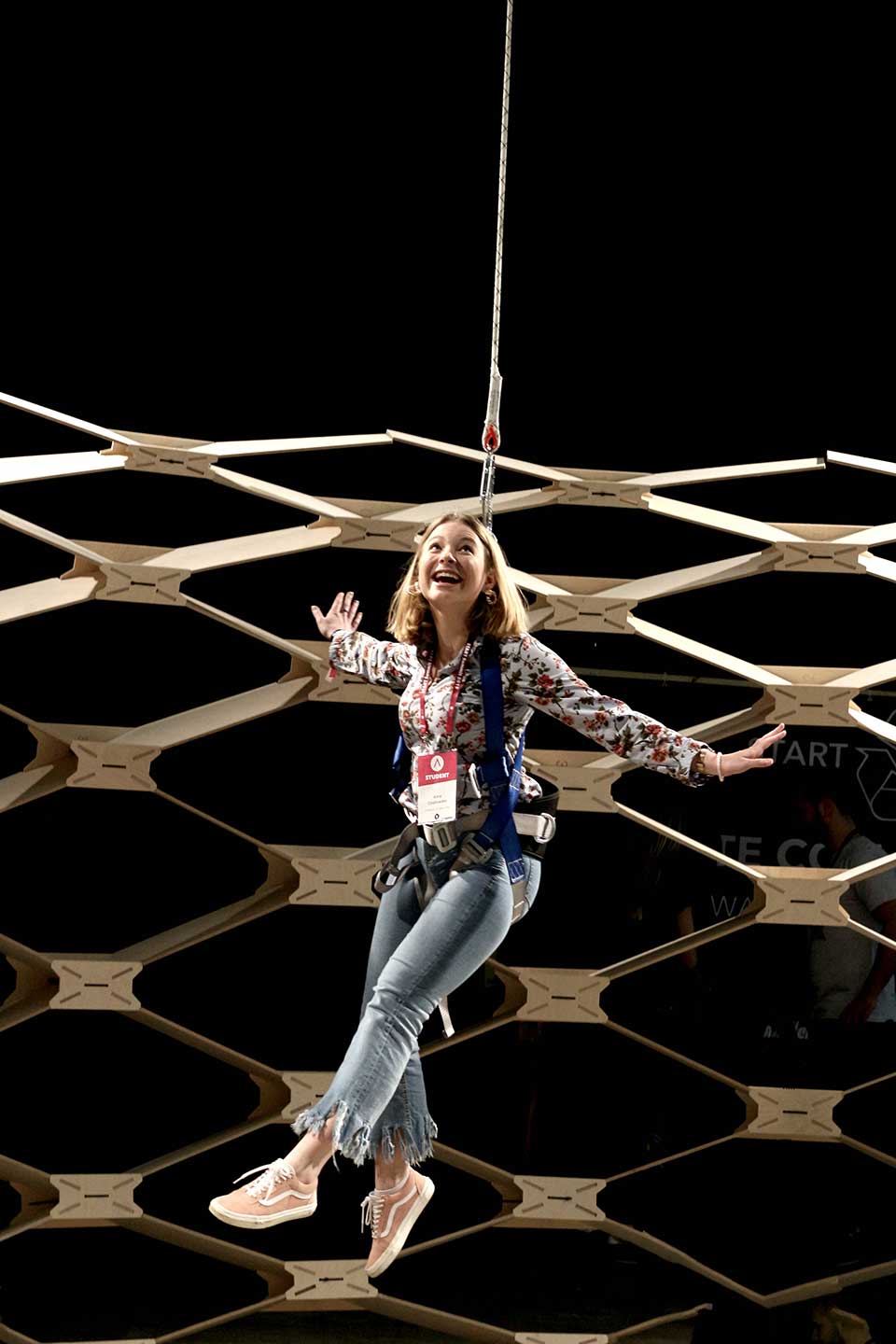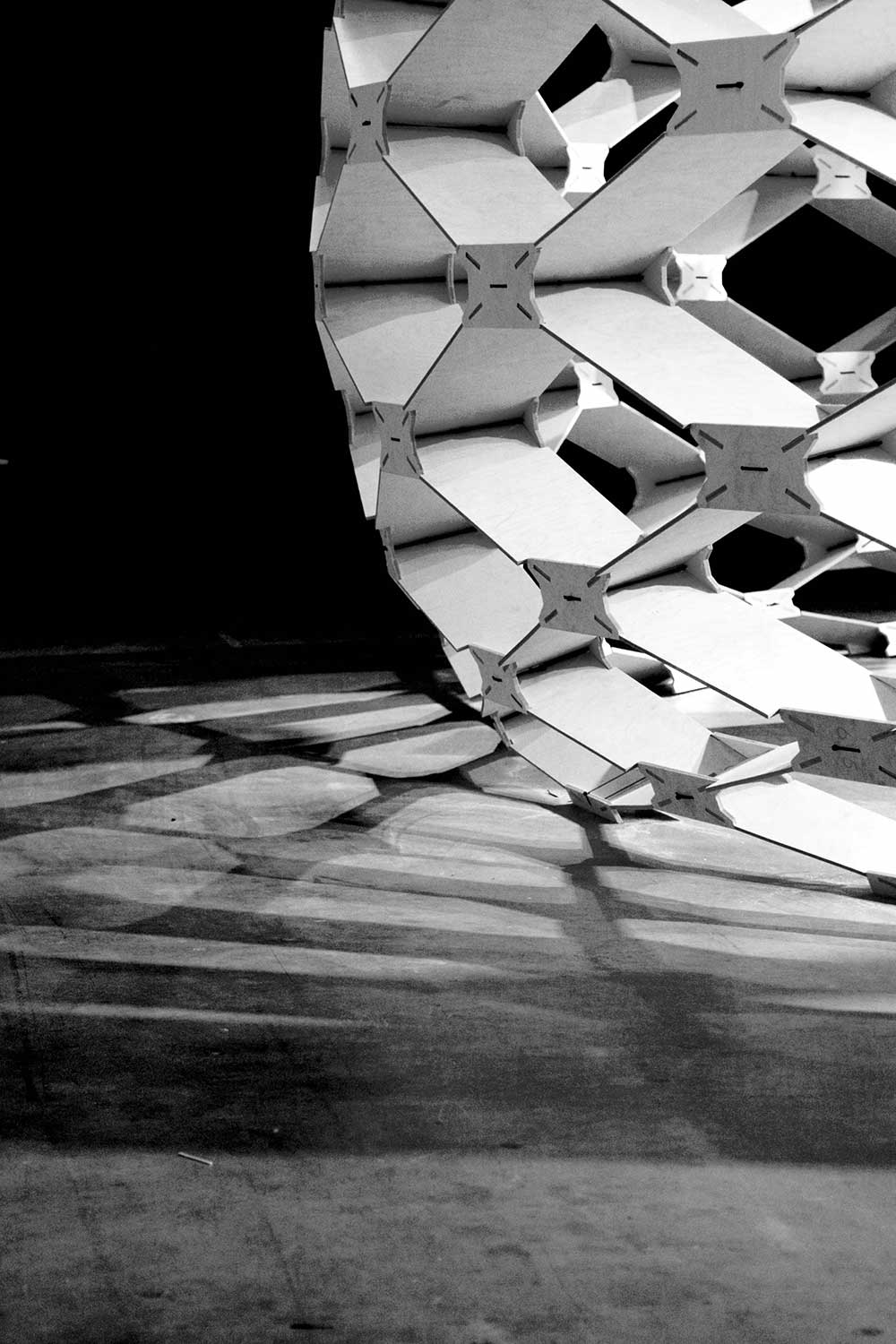In order for humans to live on Mars, there are several challenges that need to be addressed. In an entirely bizarre environment, even the gravity on Mars is different. The smaller mass of Mars means that you would only experience 38% of the surface gravity on Earth. So if you weighed 100kg on Earth, you would only weigh 38kg on Mars.
This will have a profound impact on all aspects of life on the red planet, changing everything from how we will build to how we move and hence the proportions of architectural elements the stair looks. Doing experiments in simulated mars gravity can help us make better decisions and designs for future Mars habitats. Helping us write the design manual for Mars.
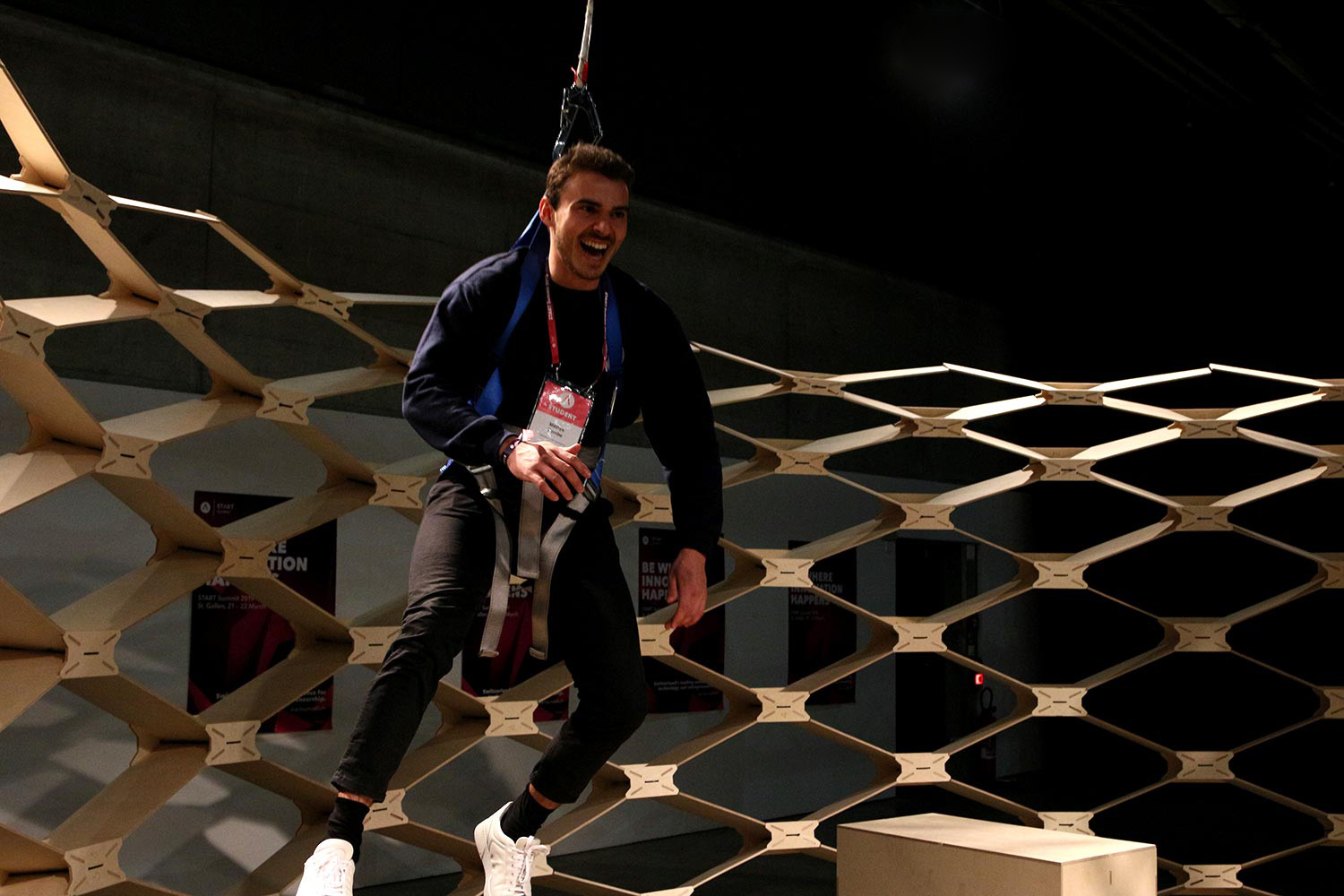
Participants of the experiment thought it was a fun experience.
The gravity experiment uses a counter-weight balance system to adjust the participants’ weight to approximately one third of their normal “earth weight”. By doing this we gave the participant a novel opportunity to experience the effects of Martian gravity on their own body. Giving them a deeper understanding of mars than simply reading the facts could provide. Apart from the participants having a fun (and educational) time, the gravity pavilion gives us important data on how to design interior spaces for future astronauts.
In this particular experiment, we investigated:
The effects of stair inclination on the ease of movement in simulated Martian gravity.
Basically - what angle of stair works well on Mars.
To enclose the experiment, we designed and manufactured a pavilion. The structure was inspired by our Circadian Home habitat. This pavilion created a protected and inspiring environment for the experiment to take place.

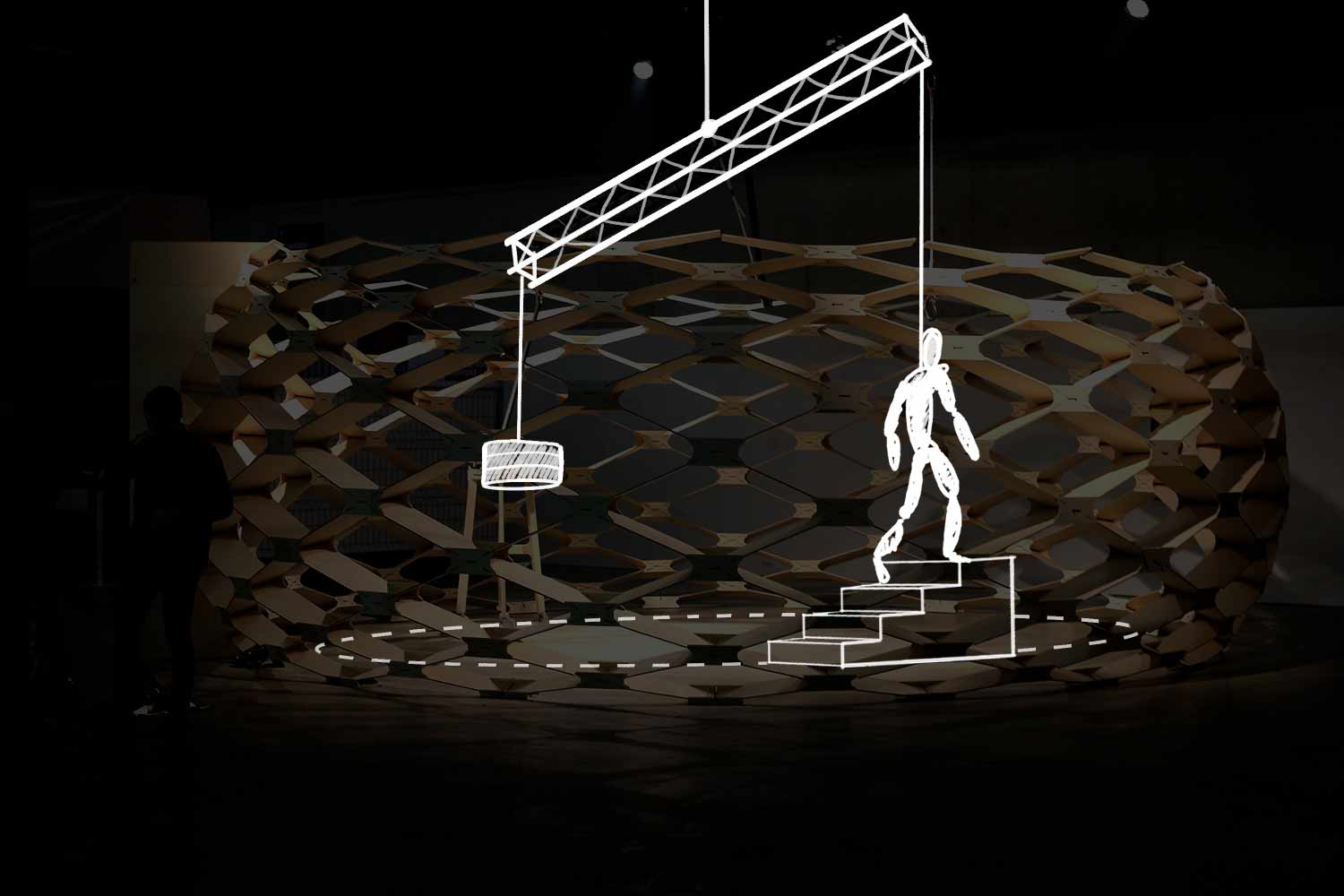
Staircase experiment
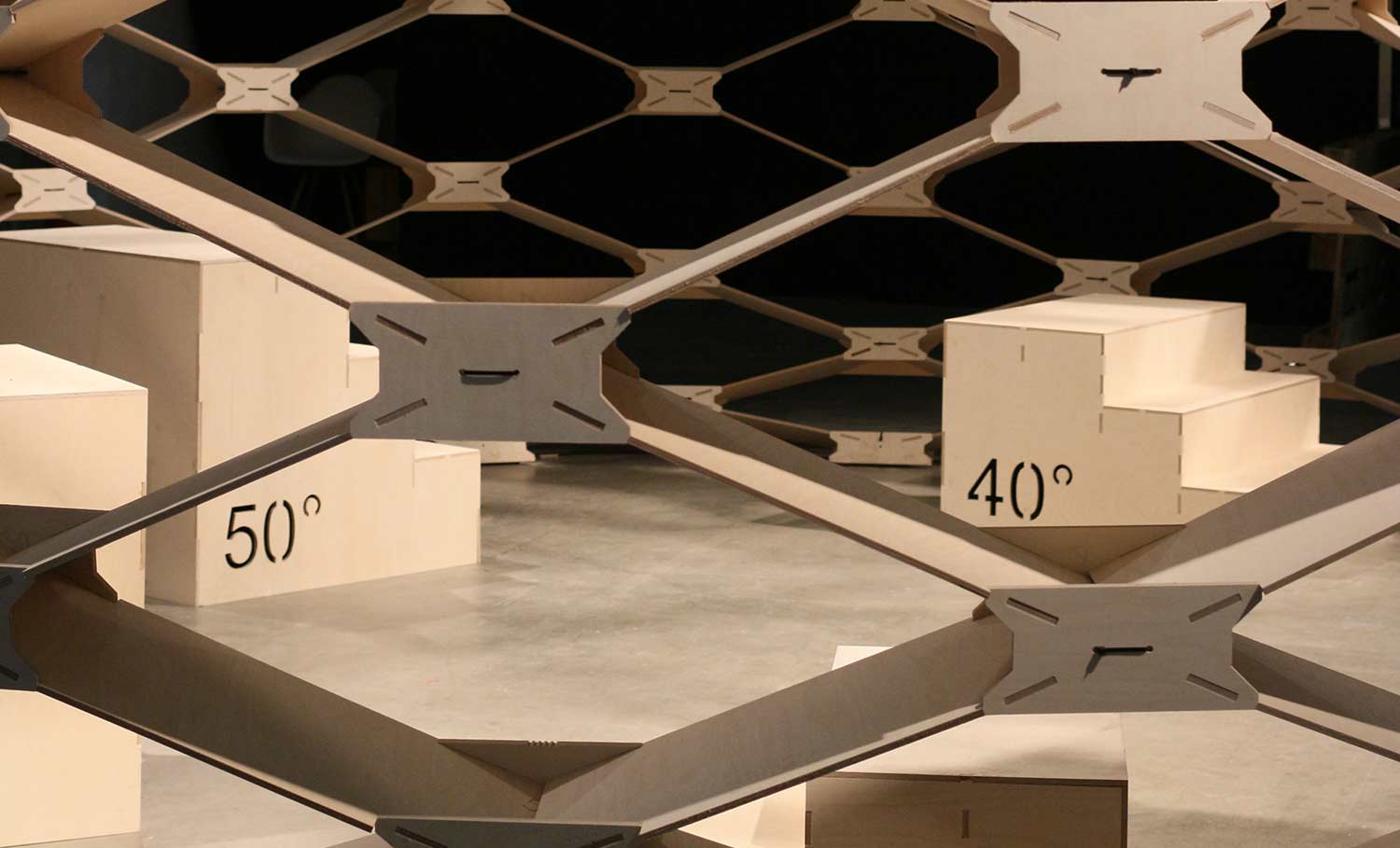
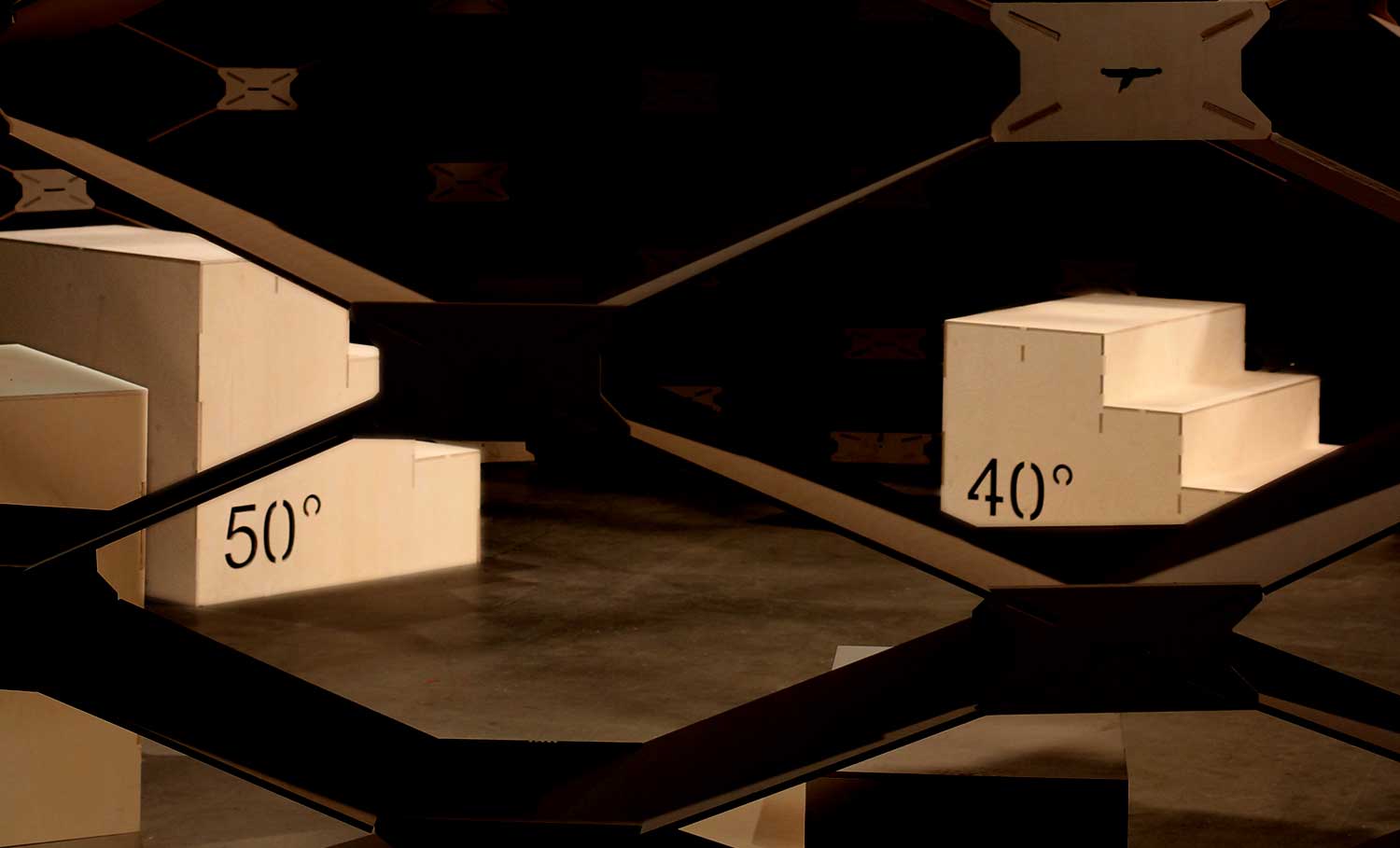
On Earth, we have defined the angle of inclination of a comfortable staircase to be around 30-35 degrees. When we eventually build on Mars the reduced gravity will significantly change vertical movement, leading to our hypothesis that stairs will have a steeper angle of inclination. To start narrowing in how an ideal staircase will look on Mars, we devised a simple experiment using four staircase angles. 30, 40, 50, 60. Each participant would, in turn, walk around in a circle, moving over all the stairs and were then asked which one they preferred.
The results
The 50° angle favorite

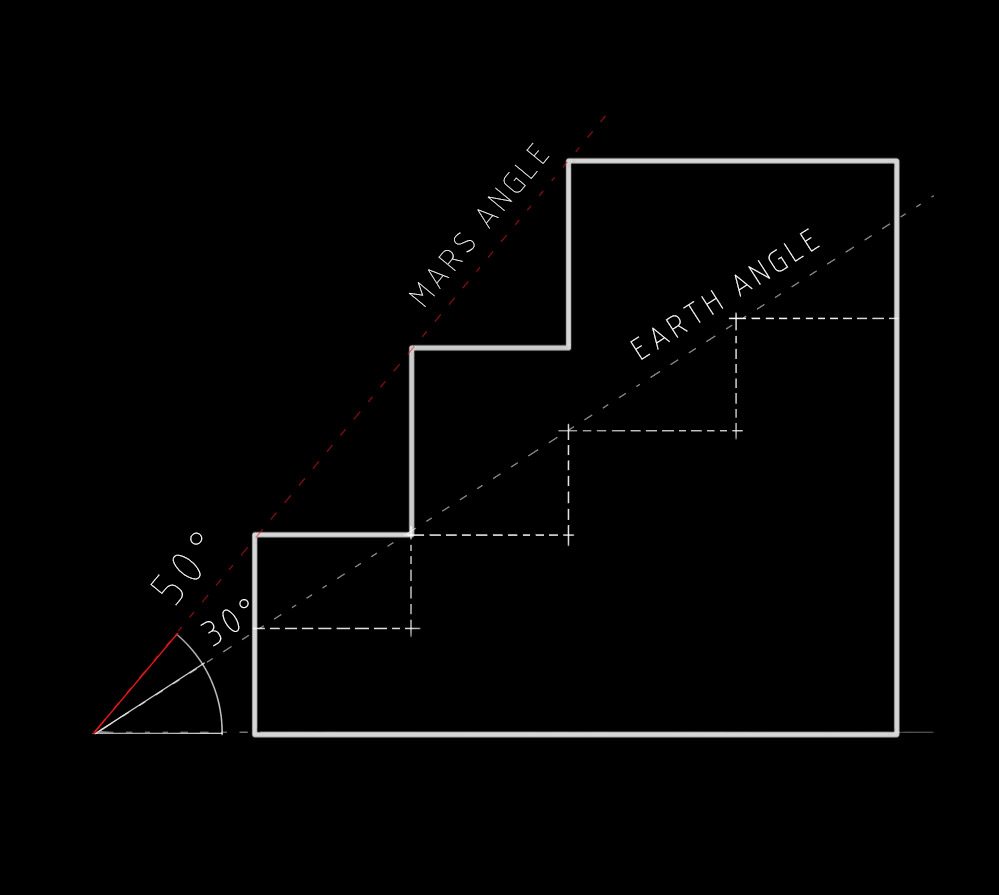
This initial experiment suggests a stair with an angle of 50 degrees and has succeeded in pointing us in the direction of further research. Of course, given the limited scope of the experiment, the result is by no means sufficient to define a new design standard for Mars. The stairs used for the experiment were small only included four angles. The way stairs are designed also means that changing the angle also changes the number of steps as well as individual step width.
These factors also influence the stairs functionality. Even if an astronaut preferred to move vertically at at an 80 degree angle, the legs wouldn't be fit for two metre tall steps. It is clear that many more studies must take place to make an accurate judgement of design standards. The question also remains of whether staircases make sense at all. Perhaps reduced gravity makes vertical movement so easy that stairs as we know them are redundant. One could imagine climbing holds or poles working as well.
The Pavilion Structure
17
unique parts
0
screws, bolts, nails
630
total parts
The entire pavilion can be put together and taken down without a single screw, bolt, nail or glue. Everything is CNC-cut out of plywood. The aesthetic is inspired by our project "Circadian Lunar Home". We wanted to make the gravity pavilion easy to assemble and take apart, while still keeping it strong, so we spent some time developing a unique CNC-cut joint system. Two joint-pieces hold together three plates at each intersection point.
All the dimensions of the 630 pieces that make up the pavilion are precisely generated by a parametric algorithm. Nothing like this has ever been done before.
A speedy video showing the two main stages of the construction of the pavilion. CNC-cutting and assembly. It took just one day to assemble everything,
Although it looks complex, it's actually a modular structure with just 13 unique plates and joints. These make up a module which is repeated 17 times around the structure. No part is longer than 1m and it's all flat-packed. It's like a big IKEA set!
